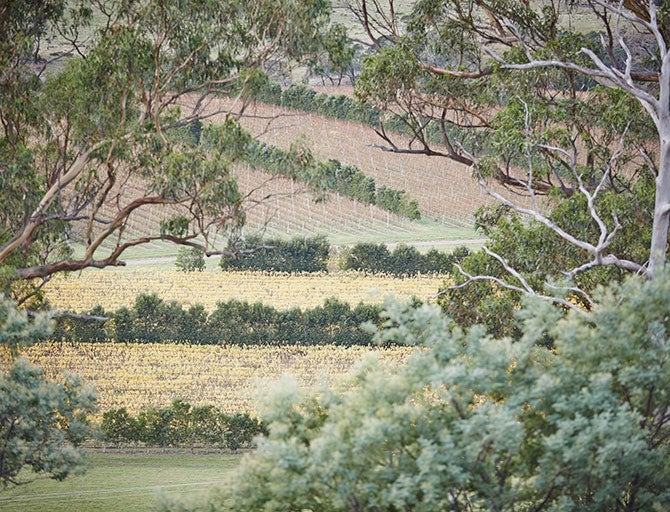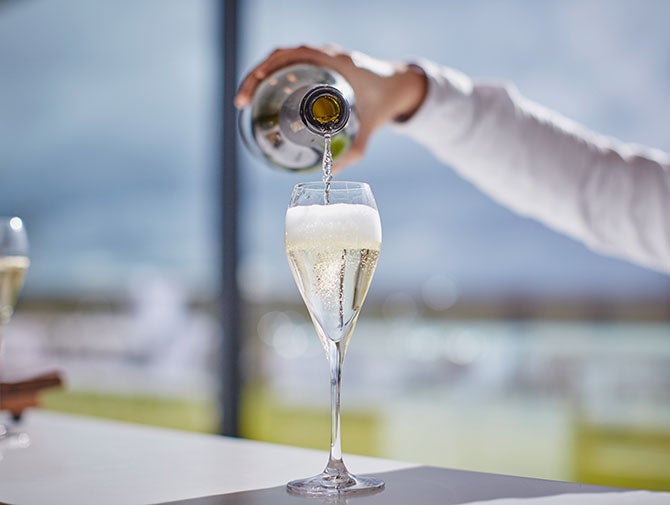Wild and wonderful
This slice of wilderness south of mainland Australia is home to dramatic mountains, national parks and sweeping bays of crystal-clear water. It’s a pretty spectacular backdrop to some of Australia’s best wine, food and cultural experiences.
There’s nothing but ocean between here and Antarctica, and the weather’s generally cool, though summer temperatures can soar in the central parts of the island. The weather is dominated by the surrounding bodies of water – the Tasman Sea to the west, the Bass Strait to the north and the Indian Ocean to the east – which can all deliver powerful winds and rain storms. That’s one reason why you’ll find the island’s wine-growing regions in areas sheltered by the dolerite-capped mountains.
Vines were first planted in the early 1800s, but with much of the wine spotlight on Australia’s mainland, things didn’t really kick off until the 1950s. As Tasmania’s potential as a premium wine region became clear, plantings grew. In 1986, there were just 47 hectares of vines – today there are more than 1,750 hectares, with new vineyards planned.
For many years, this small, remote island quietly went about its business but in recent years it’s moved to centre stage as more people have discovered its world-class wines. It now has around 230 vineyards and 95 cellar doors. Demand for its grapes outstrips supply, sending prices climbing upwards – but rapid expansion is the last thing on the minds of most vineyard owners, who don’t want to dilute Tasmania’s reputation for quality by developing sites that are anything less than outstanding.
Variety show
Tasmania has ideal growing conditions for producing naturally elegant, intensely flavoured and aromatic wines. A number of varieties flourish here, including Riesling, Pinot Gris and Sauvignon Blanc, but the two stars of the show are Pinot Noir and Chardonnay. They make up a large proportion of the island’s vine plantings and thrive in the mineral-rich soils, producing excellent, elegant still and sparkling wines.
You can expect to find Australia’s finest sparkling wines here, reflecting the cool, pristine environment and high levels of winemaking expertise. These premium wines helped make the region famous and today more than 40% of the wines coming out of Tasmania are sparkling. Stylistically they’re diverse, ranging from fresh, vibrant everyday drinking styles to more serious, age-worthy sparkling wines.
Top talent
With its clean air and pure water, Tasmania is a haven for passionate growers and producers of food and wine. Winemaker Anna Pooley of Pooley Wines is part of Tasmania’s first third-generation winemaking family, working alongside her winemaker husband and her brother, who manages the vineyards. Anna was just eight when she experienced her first harvest at the family’s vineyard in southern Tasmania. Today the family is producing award-winning wines and their vineyards are the island’s first to be fully accredited as environmentally sustainable. “We have some really exciting and diverse areas for producing wine in Tasmania, where even slight differences in climate equate to a fabulous spectrum of wines,” says Anna.
Another winemaker who relies on Tasmania’s pristine environment is Ed Carr. In 1988, he set out to make world-class sparkling wine and in 1995 he launched House of Arras. He believed in Tasmania’s potential to produce incredible grapes for sparkling wines and crafted the first sparkling made from 100% Tasmanian fruit. Today House of Arras is Australia’s most awarded producer of sparkling wines and Ed has achieved his original goal many times over.
Tasmania is an exciting wine region for many reasons, not least because it’s only just started to realise its potential. The term ‘bright future’ gets thrown around a lot, but rarely has it been more relevant than here, now.





